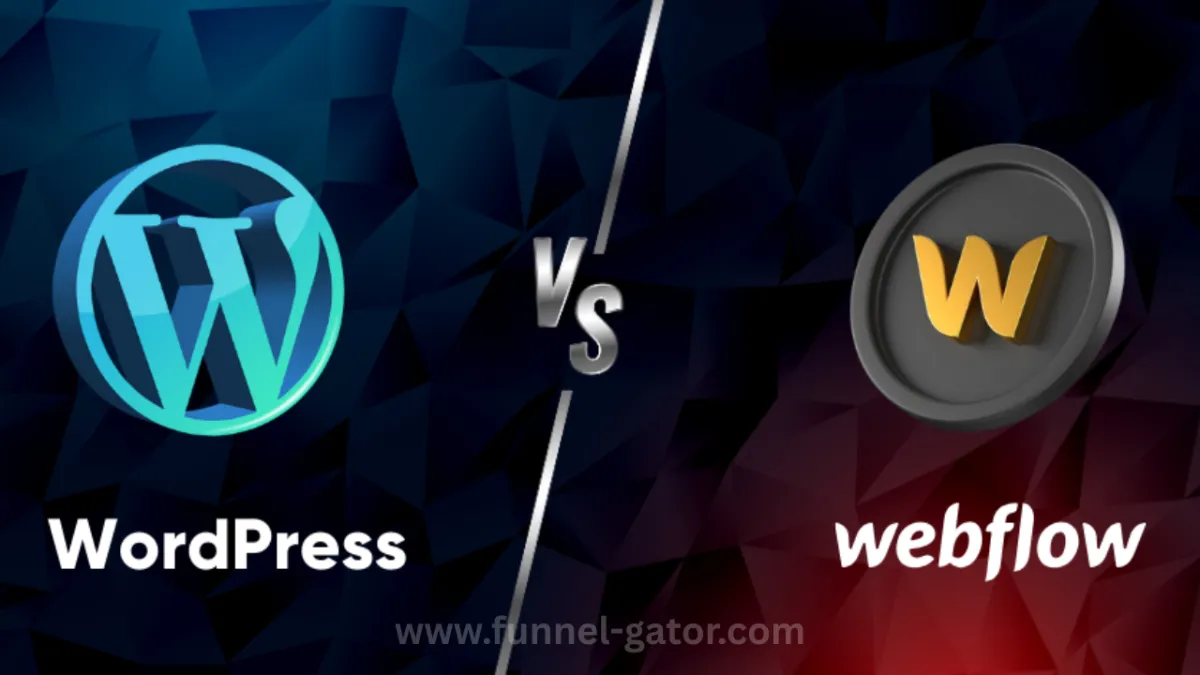
Webflow vs WordPress: Which One Should You Choose in 2025?
If you're building a website in 2025, you've likely come across two of the most talked-about platforms — Webflow and WordPress. Both are powerful, popular, and widely used by developers, designers, and business owners around the world. But here's the big question:
Which one is the right choice for you?
In this article, we’ll break down the Webflow vs WordPress debate in simple terms. We’ll cover their pros and cons, real-life use cases, ease of use, pricing, and even share a step-by-step guide to help you get started with either platform.
🧠 What Is WordPress?
WordPress is the world’s most popular website-building platform. It's open-source and powers more than 43% of all websites on the internet. Whether you're creating a blog, portfolio, online store, or a corporate website, WordPress has tools to do it all.
Pros of WordPress:
Thousands of themes and plugins
Huge support community
Easy blogging features
Great for SEO with tools like Yoast SEO
Cons of WordPress:
Can get slow if not optimized
Needs regular updates and security checks
Requires plugins for more advanced design
🧩 A Quick Anecdote
“When I launched my first blog in 2018, I picked WordPress because everyone around me used it. I had zero technical knowledge, but within a weekend, my site was live. The downside? I ended up spending more time on updates and plugin conflicts than actually writing content.”
✨ What Is Webflow?
Webflow is a modern visual web design platform. It gives you the power of code — without needing to write a single line of it. You can design, build, and launch responsive websites using a clean drag-and-drop interface, while Webflow writes the HTML, CSS, and JavaScript for you in the background.
Pros of Webflow:
Full design control
Clean code output
Built-in hosting and CMS
No need for plugins
Cons of Webflow:
Steeper learning curve
More expensive than basic WordPress hosting
Limited plugin ecosystem
🎨 Design Flexibility: Webflow vs WordPress
If you're someone who loves design and wants full control over every element on your page, then Webflow is a dream come true.
With Webflow, you're designing visually like in Photoshop or Figma, but for the web. You don't need templates — you build your layout from scratch or use pre-built components and customize every detail.
On the other hand, WordPress relies heavily on themes. Some are flexible (like Elementor) or Divi, but you're still limited by what the theme allows.
“I helped a friend redesign her bakery website. With WordPress, we were stuck with a rigid theme. But when we switched to Webflow, she was amazed by how we could literally move anything, anywhere.”
🚀 SEO: Who Does It Better?
Both platforms are SEO-friendly, but they do it differently.
In WordPress, SEO depends on plugins like Yoast or Rank Math.
Webflow has built-in SEO settings like customizable meta titles, alt texts, 301 redirects, and a clean code structure.
If you're technically inclined, Webflow gives you more native control. But if you're a beginner, WordPress plugins make it super easy to manage your SEO.
🛠️ Ease of Use: Which One Is Simpler?
If you're a beginner and want a faster learning curve, WordPress is the winner.
You can launch a WordPress site with a few clicks using hosting providers like Bluehost, SiteGround, or Hostinger.
Webflow has a steeper learning curve, especially if you're not familiar with CSS/HTML concepts.
Step-by-Step: How to Launch a Site
With WordPress:
Choose a hosting provider
Install WordPress (1-click install)
Choose a theme
Install plugins
Start customizing
With Webflow:
Sign up at Webflow.com
Choose a blank canvas or a template
Use the drag-and-drop builder to design
Set up pages and CMS content
Publish with built-in hosting
💰 Pricing Comparison: Webflow vs WordPress

If you're on a budget, WordPress is more affordable. But Webflow includes hosting, security, and design tools, so you get more value if you want an all-in-one package.
🔒 Security & Maintenance
WordPress sites need regular updates for the core system, themes, and plugins.
Webflow handles all security and maintenance for you.
This makes Webflow more hands-off, which is perfect for busy business owners or solo entrepreneurs.
🎯 Who Should Use What?

🛒 Why You Can Buy with Confidence
Both platforms are industry-proven with huge communities, tutorials, and customer support. Whether you pick the flexibility of WordPress or the power of Webflow, you’ll be in good hands.
If you're a creative designer, Webflow gives you the freedom to build stunning, custom layouts. If you’re a content-first creator or a beginner, WordPress is easy to get up and running.
Ultimately, the right choice depends on your goals, technical comfort, and budget.
❓FAQs About Webflow vs WordPress
Q1. Is Webflow better than WordPress for SEO?
Yes and no. Webflow has clean code and built-in SEO features, while WordPress relies on plugins. If you’re comfortable with SEO, Webflow gives more direct control.
Q2. Can I move from WordPress to Webflow or vice versa?
Yes, but it takes time and effort. You'll need to manually export/import content or use tools like Udesly for conversions.
Q3. Which is more beginner-friendly?
WordPress. It’s easier to set up and has more tutorials and community support for non-tech users.
Q4. Does Webflow have plugins like WordPress?
No. Webflow integrates with tools like Zapier and Airtable, but it doesn’t use plugins in the same way.
Q5. Is Webflow worth the price?
Absolutely — if you want custom designs without code, fast hosting, and all-in-one features, Webflow offers a lot of value.
Final Thoughts
Choosing between Webflow vs WordPress is like choosing between a sports car and a family SUV. Both get the job done — but differently.
If you value full creative control, sleek design, and built-in performance, go with Webflow.
If you want ease of use, affordability, and a content-heavy site, stick with WordPress.


